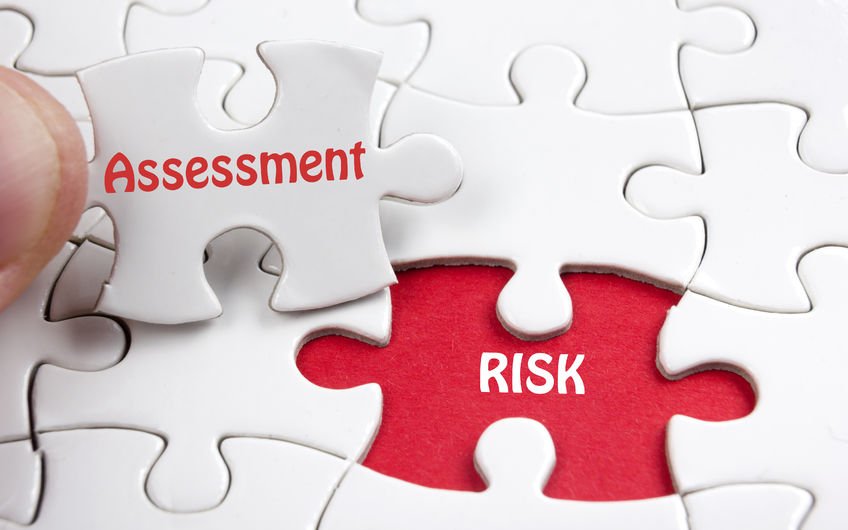BLOG
3 strategies for managing stress in the workplace

Dealing with stress in the workplace has long been an issue for organisations. However, due to the ongoing mental health impact of the coronavirus pandemic, as well as an illuminating Acas report which shone a light on the link between workplace conflict and stress, it is becoming harder and harder for employers to ignore this pervasive problem.
The statistics speak for themselves. In 2019/20, the total number of cases of work-related stress, depression or anxiety reached 828,000, resulting in 17.9 million days lost – significantly higher than the previous period. It’s believed that the upheaval of COVID-19 and demand for services will have catalysed a further spike in cases – in fact, a recent CIPD survey found that 37% of organisations have noticed an increase in stress-related absences this past year.
Most recently, an Acas report revealed that disputes at work are a major cause of stress. 56% of those who experienced workplace conflict suffered stress, anxiety or depression, and the vast majority of these individuals remained in work, leading to an estimated annual cost of £590 million and £2.3 billion in presenteeism alone. Factor in absences, and this can become a hugely expensive problem for employers.
Taking all of this into account, like any other health and safety hazard, there are clear financial, moral and legal reasons to prioritise stress management in the workplace. As an employer, not only do you have a duty to support employee wellbeing, but you will no doubt want to prevent stress from impacting your bottom line, as well as ensure you don’t fall foul of the law.
So what duties do employers have in relation to work-related stress, and what strategies can you adopt?
First, it’s important to understand what we mean by stress
The Health and Safety Executive (HSE) says stress is “the adverse reaction people have to excessive pressure or other types of demands placed on them.” This definition makes the important distinction between stress, which has negative health implications, and pressure, which can be a motivator, such as a deadline in work.
The difficulty, of course, is knowing when pressure becomes a stressor. In short, pressure is a necessary part of getting things done, while stress is the negative result of excessive pressure; in other words, where there are too many demands and not enough resources to meet them. In this way, a demanding work environment can easily become stressful without strategies in place to manage stress in the workplace.
What’s stressful to one person may not be stressful to another; however, common negative causes of stress include hostile workplace relationships – as evidenced by Acas – as well as heavy work demands and a lack of clear job descriptions.
Related Content

FREE WEBINAR
Managing Work-Related Stress Resulting from Conflict, COVID and Other Causes
Do you need support?
Speak to us for an honest, no obligation chat on:
0345 226 8393 Lines are open 9am – 5pm
Why manage workplace stress?
Workplace stress can have a significant impact on both individuals and businesses.
On an individual level, stress affects the performance of the brain, including functions such as concentration, memory and learning; if employees remain in work, this will naturally impact their ability to carry out their role. People who are made ill because of their work can also take considerable time to recover, and for some this is life-changing.
For businesses, this translates into poor productivity, pressure on management, and possibly having to endure lengthy absences – indeed, one case can lead to an average of 30 days off work.
What’s more, increased absences mean increased workload to absorb everywhere else, which could put further pressure on other members of staff. Therefore, unless you deal with stress in the workplace, and properly identify and address the root causes, you may find yourself in a position where you are simply transferring the problem around. Not only will this exacerbate the symptoms outlined above, but if stress becomes insidious, it may result in elevated employee turnover and affect overall engagement. This all incurs expense.
Lastly, there is a legal impetus to develop your strategies for managing stress in the workplace. The Health and Safety at Work etc Act 1974 requires employers to safeguard the health, safety and welfare of their employees, so far as is reasonably practicable – a term which simply means balancing cost against risk. More specifically, the Management of Health and Safety at Work Regulations 1999 require employers to make a “suitable and sufficient assessment” of the health and safety risks employees are exposed to while at work – and this includes stress.

Strategies for managing stress in the workplace
1. The Management Standards
The HSE’s Management Standards provide a useful starting point when it comes to dealing with stress in the workplace.
This approach requires managers, employees and their representatives to work together to improve certain areas of work that commonly contribute to stress, in the same way you would tackle any workplace health and safety hazard. The six key areas covered by the Management Standards are:
- Demands – Are there issues with workload, work patterns, etc.?
- Control – How much say do people have in the way they do their work?
- Support – Do employees receive the encouragement, support and resources they need from the organisation, line management and colleagues?
- Relationships – Are you promoting a positive working culture? Are you dealing with conflict and unacceptable behaviour effectively? This is important given Acas’ recent findings.
- Role – Do people understand their role? Are responsibilities and expectations clear? Are people working in conflicting roles and therefore working against each other?
- Change – How does the organisation manage and communicate change? Upheaval and uncertainty can lead to anxiety and stress – this is obviously hugely relevant at the moment.
This is an organisational strategy for managing stress in the workplace, rather than focusing on specific individuals – the advantage being that a larger number of employees can benefit from any actions taken.
If you are looking for ways to improve stress management in the workplace, why not start by conducting a review against the Management Standards to see how you currently measure up.
2. Risk assessment
Risk assessment is a valuable tool when it comes to managing all sorts of workplace health and safety risks, and stress is no different. A stress risk assessment will follow a similar approach to other types of risk assessment; however, while traditional risk assessments focus on a specific task or environment, stress risk assessments will look more broadly across the organisation and will involve some unique components to specifically target work-related stress.
We recommend the following six-step approach to stress risk assessments:
- Talk to employees, employee representatives and managers.
- Review sickness records, as well as records related to turnover, to get a better idea of whether stress is a contributing factor and the extent of the problem.
- Consider who could be harmed and how.
- Review the controls you currently have in place and identify what (if any) further ‘reasonably practicable’ measures are needed to reduce risk to a minimum.
- Review findings with senior management and agree next steps.
- Implement changes and decide on the review period.
The HSE provides a number of example risk assessments for work-related stress which show how other businesses have managed risks and can be used as a guide when conducting your own.
We’ve also produced an Individual Stress Risk Assessment template which can be used with individual employees to help you identify and manage specific causes. This can be downloaded for free above.
3. Occupational Health
In some cases, when dealing with stress in the workplace, Occupational Health support may be required to get the employee the assistance they need.
According to the CIPD, just under three quarters of organisations provide Occupational Health services to employees, mostly through outsourcing arrangements that most commonly focus on assessing fitness to work (80%) and providing professional diagnosis and prognosis for those off sick (77%).
It also stressed the importance of being proactive rather than reactive when it comes to enlisting Occupational Health Support, saying: “Instead of primarily viewing occupational health as a referral service for challenging sickness absence cases, more organisations could benefit from tapping into occupational health at an earlier, preventative stage to help develop their health and wellbeing programmes.”
If you’re interested in learning more about Occupational Health strategies for managing stress in the workplace, particularly where it results from workplace conflict, watch our recent webinar above for advice from our partners, Healthwork. Alternatively, find out how their Occupational Health services can help your organisation to improve wellbeing at work.
Get specialist support with work-related stress
Not confident that you’re meeting your responsibilities in regards to work-related stress? Need expert guidance on a particularly tricky or sensitive scenario? Whatever challenge you’re facing, our Health & Safety and Employment Law specialists can help with everything from formulating risk assessments to facilitating a return to work.
To discuss your specific situation and find out how Ellis Whittam can help you to manage stress and other work organisation hazards, call 0345 226 8393 or request your free consultation using the button below.
Sign up for the latest news & insights
Resources
Latest News & Insights

Work from wherever? | Things to consider before allowing employees to work from abroad
BLOG Written by Alexandra Farmer on 25 May 2022 A few years ago, the idea of working from anywhere in the world seemed like a pipe dream.

Reduced workforce? Here’s 5 health and safety areas you need to revisit
BLOG Written by Charles Spencer on 18 May 2022 In 2022, a growing number of businesses have moved, or are in the process of moving,

Fee for Intervention | Why health and safety breaches could cost your business more in 2022
BLOG Written on 16 May 2022 It’s a well-known fact that poor health and safety practices cost businesses money. And with the HSE recently announcing yet another

Remote work isolation | How employers can help combat loneliness
BLOG Written on 12 February 2021 While the benefits of remote work are seemingly boundless, often overlooked is the isolation and disconnectedness that it can

Time off for getting married or moving house
BLOG Written on 12 May 2022 There are certain big life events that can sometimes get in the way of work. Whether it’s a wedding

Recent cases highlight continued work at height failings
BLOG Written on 6 May 2022 Working at height continues to be the leading cause of work-related fatality. According to most recent HSE figures, these

Managing organisational change | How to keep people happy
BLOG Written on 28 February 2022 In the direst of circumstances, humanity’s true capacity for adaptation and perseverance can be realised. Where the business world

5 ways to combat 2022’s recruitment challenges when you can’t pay more
BLOG Written by Christian Vincent and Hannah Copeland on 15 April 2022 In 2022, recruitment and retention are fast becoming employers’ biggest challenges. With people

A war of words | Managing employees’ political views on the Russia-Ukraine conflict
BLOG Written by Lesley Rennie on 13 April 2022 The war in Ukraine, and the daily news reports of fatalities, continues to spark conversation in





